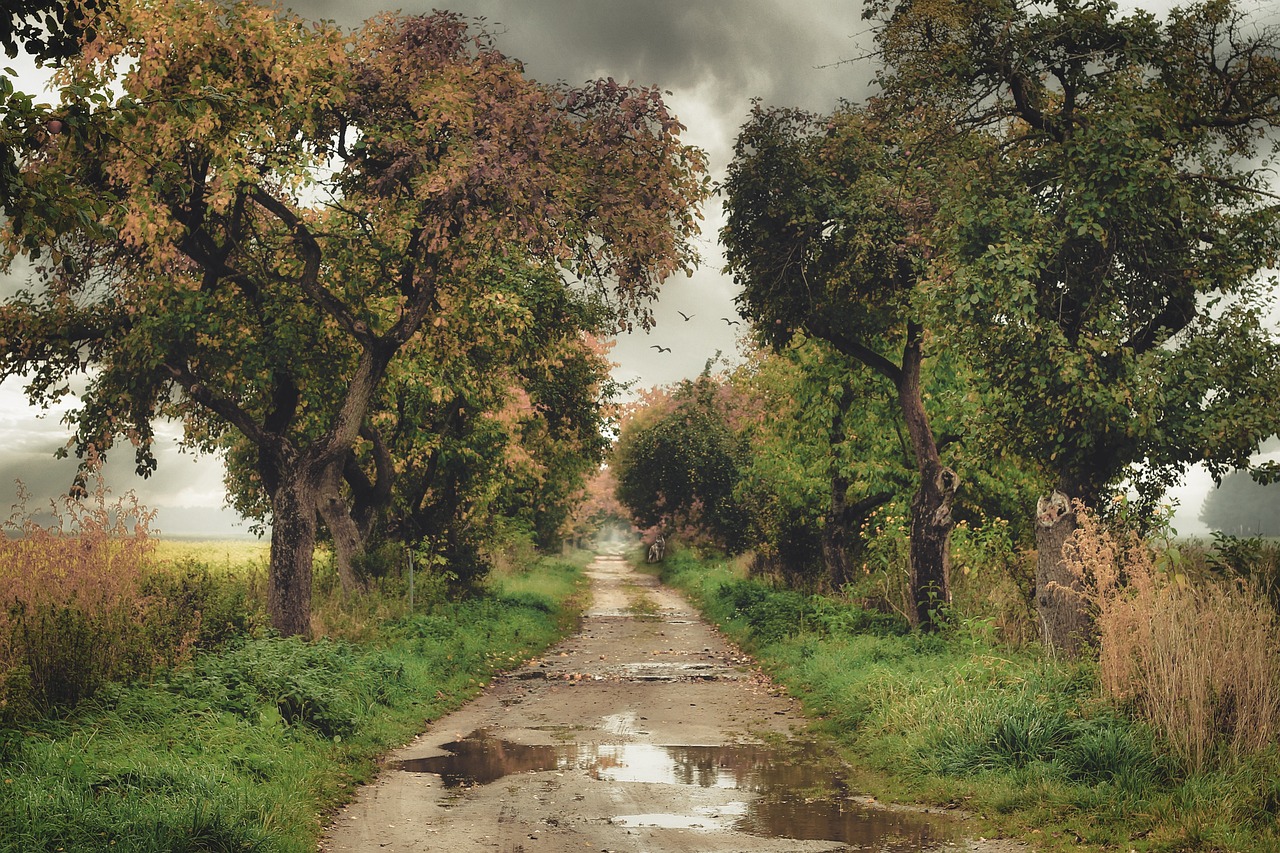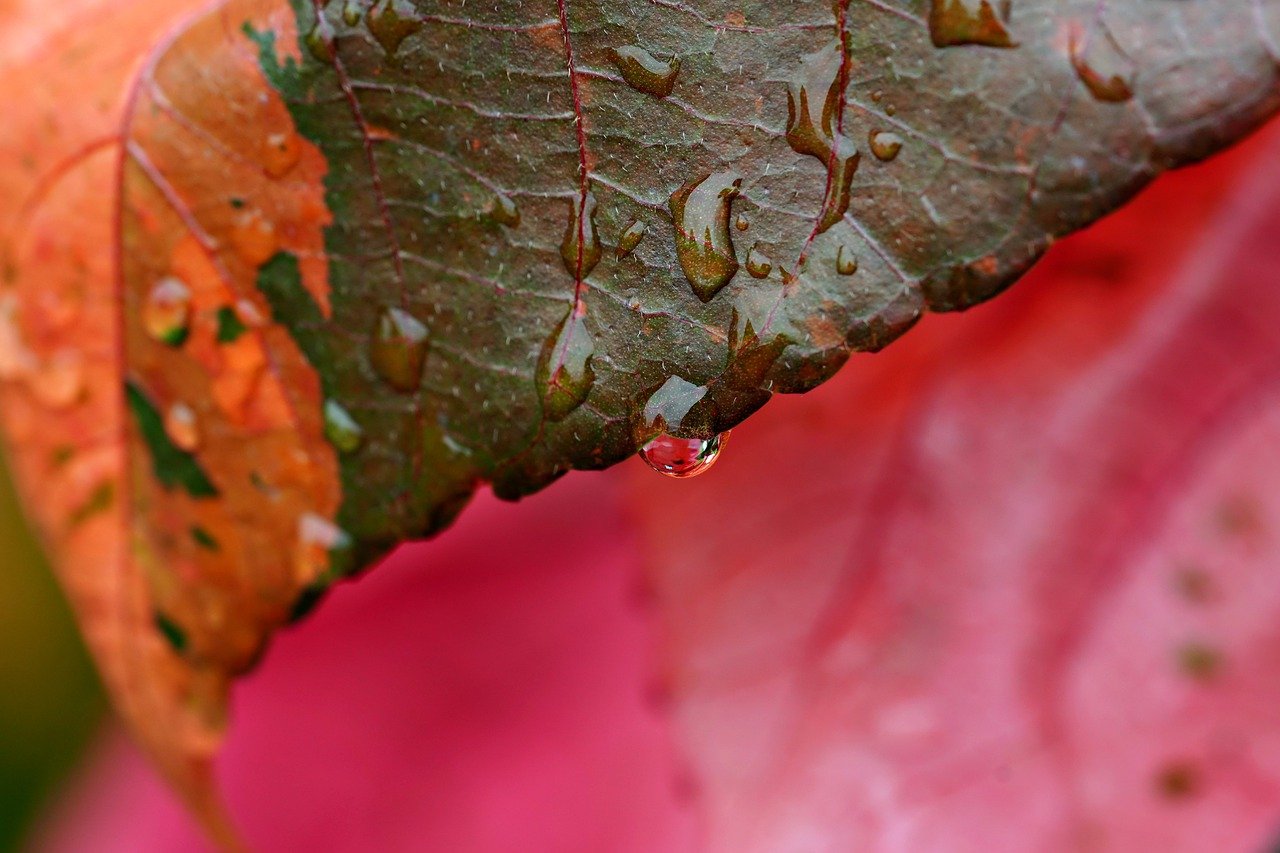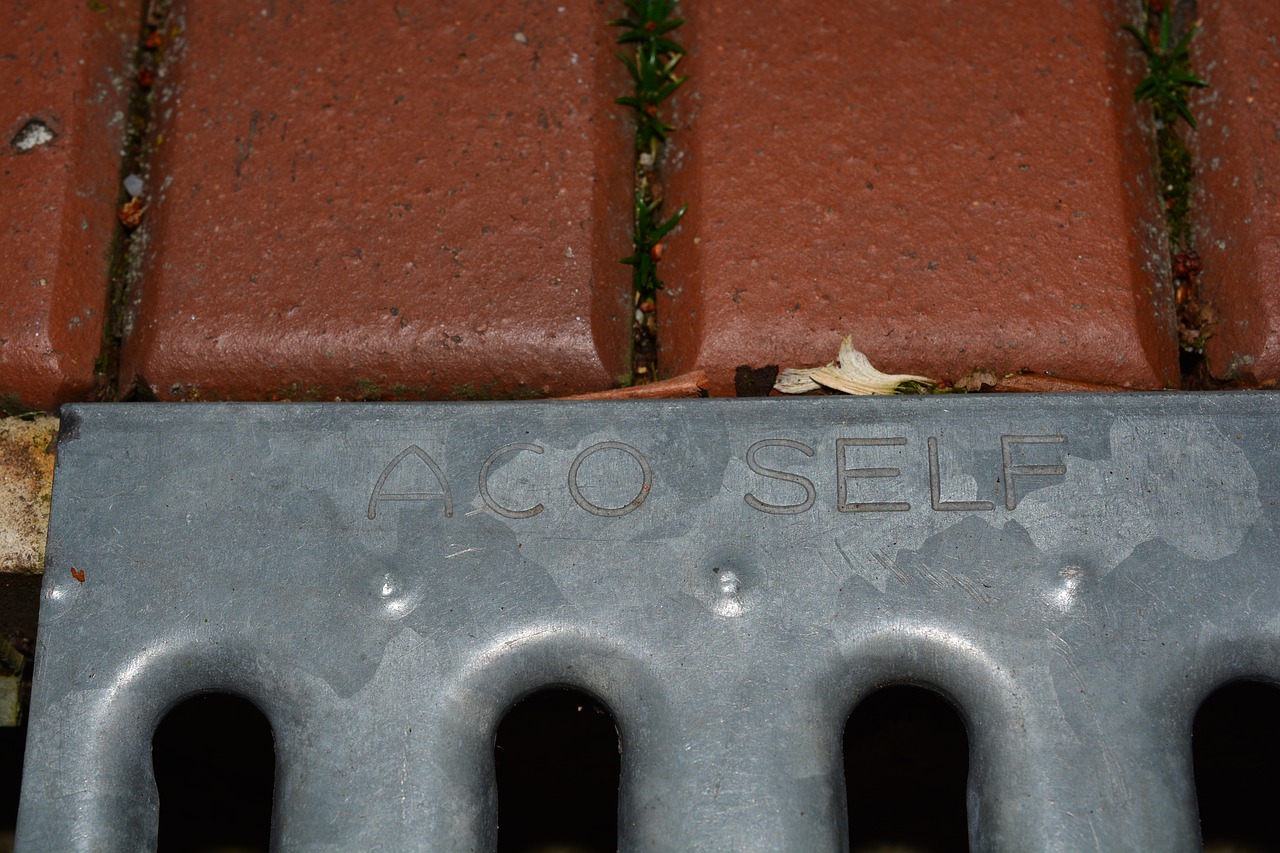Setting Up a Rainwater Collection System
Have you ever thought about how much water falls from the sky every time it rains? It's astonishing! Setting up a rainwater collection system can not only help you save on your water bill but also contribute to a sustainable future. In this article, we will explore the essential steps and considerations for establishing an effective rainwater collection system. We’ll dive into its benefits for sustainability, water conservation, and cost savings, making it clear why you should consider this eco-friendly option.
Rainwater harvesting is the process of collecting and storing rainwater for future use. This practice is gaining popularity as people become more aware of the importance of water conservation. By harvesting rainwater, you can reduce your reliance on municipal water supplies and lower your utility bills. But that's not all! The benefits of rainwater harvesting extend beyond just financial savings. It also helps to mitigate stormwater runoff, which can lead to flooding and water pollution. Imagine capturing all that free water and using it for irrigation, washing your car, or even flushing toilets. The possibilities are endless!
Now that you're excited about the idea of collecting rainwater, let’s talk about where to set up your system. Choosing the right location is crucial for maximizing your collection efforts. Consider factors like the type of roof you have, drainage patterns, and local regulations that may affect your setup. For instance, roofs made of metal or tile are often more suitable for rainwater collection than asphalt shingles, which can leach harmful chemicals into the water. Additionally, observe how water flows around your property during a rainstorm; this can help you determine the best placement for your gutters and downspouts.
A rainwater collection system consists of various components that work together to capture and store rainwater efficiently. The main elements include gutters, downspouts, storage tanks, and filtration systems. Each component plays a vital role in ensuring that your system operates smoothly. For example, the gutters channel rainwater from your roof, while downspouts direct it into your storage tanks. Without proper filtration, however, your stored water may not be safe for use. Understanding these components is key to designing an effective system.
Gutters and downspouts are the unsung heroes of your rainwater collection system. They play a vital role in directing rainwater into storage. When choosing gutters, consider the material, size, and shape. Aluminum and copper are popular choices due to their durability. Regular maintenance is also essential. Clean your gutters at least twice a year to prevent blockages caused by leaves and debris. A clogged gutter can lead to overflow, which defeats the purpose of your collection efforts!
Choosing the right storage tank is critical for maximizing rainwater collection. Tanks come in various materials such as plastic, fiberglass, and concrete, each with its own pros and cons. When selecting a tank, consider factors like size, location, and whether you want an above-ground or underground system. An underground tank may save space and keep the water cooler, while above-ground tanks are easier to monitor. Make sure to place your tank in a location that is easily accessible for maintenance and cleaning.
Proper filtration and treatment are essential for ensuring collected rainwater is safe for use. Depending on your intended applications, you may need different filtration methods. For instance, a simple screen filter can remove larger debris, while a more advanced system may include sediment filters and UV treatment to kill pathogens. Always assess your needs and choose a filtration system that suits your specific requirements.
Before diving headfirst into setting up a rainwater collection system, it's important to understand local laws and regulations. In some regions, rainwater harvesting is encouraged, while in others, it may be restricted or require permits. Always check with your local government or environmental agency to ensure compliance. Ignoring these legal considerations can lead to fines or even dismantling your system!
Regular maintenance is necessary to ensure the longevity and efficiency of your rainwater system. Schedule routine checks to clean gutters, inspect tanks for leaks, and test water quality. Common issues to watch out for include algae growth in storage tanks and clogged filters. Addressing these problems early can save you time, money, and hassle down the line.
Implementing a rainwater collection system offers numerous benefits. Here are just a few:
- Environmental Impact: Reduces stormwater runoff and helps replenish groundwater.
- Economic Savings: Lowers your water bill and may provide tax incentives in some areas.
- Self-Sufficiency: Provides an independent water source for irrigation and home use.
As more people recognize these advantages, rainwater harvesting is becoming a go-to solution for sustainable living. So why not join the movement and start collecting that precious rainwater?
Q1: Can rainwater be used for drinking?
A1: Yes, but it must be properly filtered and treated to ensure safety.
Q2: How much rainwater can I collect?
A2: The amount depends on your roof size and rainfall levels in your area.
Q3: Is rainwater harvesting legal in my area?
A3: It varies by location; check local regulations for guidance.

Understanding Rainwater Harvesting
Rainwater harvesting is not just a trendy buzzword; it's an age-old practice that has gained renewed attention in our modern quest for sustainability. Imagine a world where every drop of rain that falls on your roof can be captured and used to nourish your garden, flush your toilet, or even wash your clothes! This is the essence of rainwater harvesting—collecting and storing rainwater for future use. It's like having your own little reservoir right at home, ready to help you save both water and money.
So, why should you consider setting up a rainwater collection system? First off, it’s an incredible way to conserve water, especially in areas prone to drought. By utilizing rainwater, you can significantly reduce your reliance on municipal water supplies. This not only helps you save on your water bills but also contributes to a more sustainable future. In fact, studies have shown that rainwater harvesting can reduce household water consumption by as much as 50%!
Moreover, rainwater is naturally soft, meaning it contains fewer minerals than tap water. This makes it ideal for various uses, such as watering plants and washing vehicles, without the harsh effects of chemicals often found in treated water. Additionally, using rainwater can alleviate the burden on stormwater systems, reducing the risk of flooding and erosion in your community. It’s a win-win situation for both you and the environment!
Now, let’s talk about the different methods of rainwater harvesting. There are primarily two approaches: direct and indirect collection. Direct collection involves capturing rainwater directly from rooftops through gutters and downspouts into storage tanks. On the other hand, indirect collection can involve more complex systems that may include catchment areas, swales, or ponds designed to collect runoff from larger surfaces.
In terms of systems, you can opt for simple setups that require minimal investment or more sophisticated systems with advanced filtration and treatment options. Regardless of the method you choose, the key is to ensure that the collected water is clean and safe for its intended use. This often involves implementing a filtration system to remove debris and contaminants, which we’ll discuss in more detail later in the article.
In summary, rainwater harvesting is a practical and eco-friendly solution that not only helps you save money but also contributes to environmental conservation. By understanding the various techniques and benefits of this practice, you can make informed decisions about how to implement it in your own home. So, why wait for the next rainstorm? Start planning your rainwater collection system today!

Choosing the Right Location
Choosing the right location for your rainwater collection system is not just a matter of convenience; it's a crucial step that can significantly impact the system's efficiency and effectiveness. Imagine trying to fill a bucket with a hole in it—no matter how much water you collect, it's never going to be enough. Similarly, if your collection system is poorly located, you might find yourself struggling to capture adequate rainwater. So, what should you consider when selecting the perfect spot for your system?
First and foremost, evaluate the roof type of your home. Different materials, such as asphalt shingles, metal, or tile, can influence how much rainwater you can collect. For instance, metal roofs are excellent for rainwater harvesting because they allow for easy runoff and are less likely to leach harmful chemicals into the water. On the other hand, roofs made from materials like treated wood may not be ideal due to potential contamination. So, before you even think about installing gutters and downspouts, take a close look at what your roof is made of.
Next, consider the drainage patterns around your property. You want to position your collection system where water naturally flows. If your yard slopes towards one side, that's where you'll want to direct your gutters and downspouts. A well-planned drainage system can capture more rainwater and minimize waste. If you're not sure how water moves on your property, consider conducting a simple test: after a rain, observe where the water collects and flows. This can give you valuable insights into the optimal placement for your system.
Another critical factor to keep in mind is local regulations. Some regions have specific laws governing rainwater harvesting, including permits and restrictions on the size and type of storage tanks. It's essential to do your homework and consult local authorities to ensure you're in compliance. Not only does this prevent legal issues down the road, but it can also guide you in selecting the right components and materials for your system.
Lastly, think about accessibility. Your rainwater collection system should be easy to maintain. If your storage tank is tucked away in a hard-to-reach corner of your yard, you may find yourself neglecting necessary maintenance tasks. Ensure that your system is conveniently located for regular inspections and cleaning. This way, you can keep everything running smoothly and efficiently.
In summary, choosing the right location for your rainwater collection system involves a mix of practical considerations and local regulations. By paying attention to your roof type, drainage patterns, legal requirements, and accessibility, you can set yourself up for success. Remember, a well-placed rainwater collection system is like a well-oiled machine—efficient, effective, and ready to serve your water needs!
- What roof materials are best for rainwater harvesting? Metal roofs are ideal, while treated wood may not be suitable.
- How do I know where water drains on my property? Observe water flow after rain to identify natural drainage patterns.
- Are there legal restrictions on rainwater collection? Yes, check with local authorities for regulations and permits.
- Why is accessibility important for my system? Easy access allows for regular maintenance, ensuring efficiency.

Essential Components of a System
Setting up a rainwater collection system is like piecing together a puzzle; each component plays a vital role in ensuring the system functions efficiently. To create a seamless and effective rainwater harvesting system, you need to consider several essential components. These include gutters, downspouts, storage tanks, and filtration systems. Each piece is crucial, and when they work together, they can help you capture and utilize rainwater effectively.
First up are the gutters and downspouts. Think of these as the highways for rainwater. Gutters collect the rainwater that runs off your roof, while downspouts channel that water down to the storage tanks. It’s important to choose the right materials for your gutters, such as aluminum or vinyl, which are durable and resistant to rust. Additionally, maintaining these components is key; you should regularly check for clogs or debris that can obstruct the flow of water. A simple cleaning twice a year can prevent major headaches down the line.
Next, let’s talk about storage tanks. This is where your collected rainwater will be stored until it's needed. Choosing the right tank is critical for maximizing your rainwater collection efforts. Storage tanks come in various materials, including plastic, fiberglass, and concrete. Each material has its pros and cons. For instance, plastic tanks are lightweight and easy to install, while concrete tanks are more durable and have a longer lifespan. When selecting a tank, consider factors such as:
| Material | Durability | Cost | Maintenance |
|---|---|---|---|
| Plastic | Moderate | Low | Low |
| Fiberglass | High | Medium | Medium |
| Concrete | Very High | High | High |
Placement of the storage tank is also a key consideration. Ideally, it should be located close to your gutters and downspouts to minimize water loss during transfer. You should also ensure that the tank is positioned on a stable, level surface to prevent any shifting or damage over time.
Finally, let’s not overlook the importance of filtration systems. Just like you wouldn’t drink dirty water, your plants or household appliances also deserve clean water. Filtration systems are vital for removing debris, leaves, and other contaminants from the rainwater before it enters your storage tank. There are several types of filtration methods available, including:
- First Flush Diverters: These systems divert the initial flow of rainwater, which often contains the most contaminants, away from the storage tank.
- Mesh Screens: Placed at the entry point of your downspouts, these screens catch larger debris.
- Sand Filters: These provide a more thorough filtration process, ideal for systems that will be used for irrigation or household purposes.
Having a well-designed filtration system not only protects your storage tank but also ensures that the rainwater you collect is safe for its intended use, whether that’s for watering your garden, flushing toilets, or even for drinking, depending on local regulations.
In summary, the essential components of a rainwater collection system—gutters, downspouts, storage tanks, and filtration systems—work together harmoniously to create a reliable and efficient way to harvest rainwater. By paying attention to each part and ensuring they are well-maintained, you can enjoy the benefits of this sustainable practice for years to come.
Q: Can I use rainwater for drinking?
A: Yes, but only if you have the proper filtration and treatment systems in place, and you comply with local regulations.
Q: How much rainwater can I collect?
A: The amount of rainwater you can collect depends on the size of your roof and the amount of rainfall in your area.
Q: Do I need a permit to install a rainwater collection system?
A: This varies by location. It's important to check local regulations to determine if a permit is required.

Gutters and Downspouts
Gutters and downspouts are the unsung heroes of any rainwater collection system. They might not be the most glamorous components, but their role is absolutely vital in ensuring that rainwater is efficiently directed into your storage system. Think of gutters as the first line of defense against water wastage. When it rains, these channels collect water from your roof and guide it down through the downspouts, making sure that not a single drop goes to waste.
Understanding the different types of gutters and downspouts available is essential for making informed choices. There are several materials you can choose from, including:
- Aluminum: Lightweight and resistant to rust, aluminum gutters are a popular choice.
- Vinyl: Easy to install and maintain, vinyl gutters are budget-friendly but may not be as durable.
- Steel: Galvanized steel gutters are sturdy but prone to rust if not properly maintained.
- Copper: While more expensive, copper gutters are incredibly durable and can add an aesthetic appeal to your home.
When selecting gutters, consider the pitch of your roof and the average rainfall in your area. A steeper pitch may require larger gutters to handle the increased flow of water. Additionally, you should think about the size of the gutters. Larger gutters can carry more water, reducing the risk of overflow during heavy rains.
Once you've chosen the right materials and sizes, installation is key. Properly installed gutters and downspouts will work seamlessly to channel water away from your home’s foundation, preventing potential damage. Regular maintenance is also crucial. Clogged gutters can lead to significant issues, including water pooling and even roof damage. To keep your gutters in tip-top shape, make sure to:
- Inspect them regularly for debris, leaves, and dirt.
- Clean them at least twice a year, or more frequently if you have overhanging trees.
- Check for leaks and rust spots, repairing them promptly to maintain efficiency.
In conclusion, gutters and downspouts may not be the most exciting components of your rainwater collection system, but they are undoubtedly one of the most important. By choosing the right materials, ensuring proper installation, and committing to regular maintenance, you can maximize your rainwater collection efforts and contribute to a more sustainable future.
Q: How often should I clean my gutters?
A: It's recommended to clean your gutters at least twice a year, ideally in the spring and fall. If you live in an area with many trees, you may need to clean them more frequently.
Q: What size gutters do I need for my home?
A: The size of gutters you need depends on your roof's pitch and the average rainfall in your area. Typically, 5-inch gutters are suitable for most homes, but larger roofs may require 6-inch gutters.
Q: Can I install gutters myself?
A: Yes, many homeowners choose to install gutters themselves. However, if you're not comfortable with heights or lack the necessary tools, hiring a professional may be the best option.
Q: What should I do if my gutters are leaking?
A: If you notice leaks, inspect the joints and seams for any gaps. You can often seal small leaks with caulk, but larger issues may require professional repair or replacement.

Storage Tanks
When it comes to setting up a rainwater collection system, are the heart of the operation. These tanks are where all that precious rainwater is stored, ready for use when you need it. Choosing the right storage tank is critical for maximizing your rainwater collection and ensuring that you have enough water for your needs. But what should you consider when selecting a tank?
First off, material matters. Storage tanks can be made from various materials, including plastic, fiberglass, concrete, and metal. Each material comes with its own set of advantages and disadvantages:
| Material | Advantages | Disadvantages |
|---|---|---|
| Plastic | Lightweight, corrosion-resistant, and affordable. | Can degrade under UV light if not treated. |
| Fiberglass | Durable and resistant to rust. | More expensive than plastic. |
| Concrete | Very durable and can hold large amounts of water. | Heavy and can be prone to cracking. |
| Metal | Strong and long-lasting. | Can rust if not properly coated. |
Next, consider the size of the tank. This will depend on several factors, including your average rainfall, your water usage needs, and the available space in your yard. A larger tank will store more water, but it also requires more space and can be more expensive. On the other hand, a smaller tank may not meet your needs during dry spells. So, how do you find the perfect balance?
Placement is another crucial factor. Ideally, your tank should be located close to your house to minimize the length of the pipes, which can reduce the risk of leaks and water loss. Additionally, think about accessibility. You want to ensure that you can easily reach your tank for maintenance and cleaning. Remember, keeping your tank clean is essential for maintaining water quality.
Finally, don't forget about the design and aesthetics of your storage tank. While functionality is key, you might also want your tank to blend in with your landscape. Some tanks come in various colors and styles, allowing you to choose one that complements your home and garden.
In summary, selecting the right storage tank for your rainwater collection system involves considering the material, size, placement, and design. Each of these factors plays a significant role in ensuring that your system operates efficiently and effectively, providing you with a sustainable source of water. So, as you embark on this journey of rainwater harvesting, take the time to choose wisely!

Filtration and Treatment Options
When it comes to utilizing rainwater, ensuring that it is safe for consumption and other uses is paramount. This is where filtration and treatment options come into play. Without proper treatment, collected rainwater can harbor contaminants such as dirt, debris, and even pathogens that can be harmful to health. So, how do we make rainwater safe? Let's dive into the various methods available!
First off, let's talk about the filtration systems. These systems are designed to remove larger particles from the water before it enters your storage tank. Common filtration methods include:
- Mesh Filters: These are typically placed at the entrance of your downspouts and are effective at catching leaves and larger debris.
- Sand Filters: A more advanced option, sand filters use layers of sand to trap smaller particles and can significantly improve water clarity.
- Cartridge Filters: These are replaceable and can filter out particles as small as 5 microns, making them suitable for potable water applications.
After the initial filtration, the next step is treatment. This is especially important if you plan to use rainwater for drinking or cooking. Here are some popular treatment options:
- Chlorination: Adding chlorine to your rainwater can effectively kill bacteria and viruses. However, it’s crucial to monitor the levels to avoid chemical overexposure.
- UV Treatment: Ultraviolet light is a non-chemical method that can disinfect water by killing pathogens. It’s a great option for those who prefer a more natural approach.
- Reverse Osmosis: This is a highly effective filtration method that removes a wide range of contaminants, including salts and heavy metals, making it ideal for drinking water.
It’s essential to consider the specific needs of your household when deciding on a filtration and treatment system. For instance, if your rainwater is primarily used for irrigation, a simpler filtration system may suffice. However, if you intend to use it for drinking, investing in a more comprehensive treatment solution is advisable.
Moreover, regular maintenance of your filtration and treatment systems is crucial. Just like any other home system, these require periodic checks to ensure they are functioning correctly. Neglecting maintenance can lead to system failures or, worse, contaminated water. Make sure to follow the manufacturer’s guidelines and schedule routine inspections to keep everything in top shape.
In conclusion, the right filtration and treatment options not only enhance the quality of your collected rainwater but also ensure that it is safe for various uses. By investing time and resources into these systems, you’re not just conserving water; you’re also protecting your health and the environment!
Q: Do I really need to filter rainwater?
A: Yes, filtering rainwater is essential to remove contaminants and ensure safety, especially if you plan to use it for drinking or cooking.
Q: How often should I maintain my filtration system?
A: It's recommended to check your filtration system at least once a year, but if you live in an area with heavy rainfall or debris, more frequent checks may be necessary.
Q: Can I use rainwater for my garden without treatment?
A: Yes, rainwater can be used for irrigation without treatment, but be cautious if you're growing edible plants, as contaminants may still be present.

Legal Considerations and Regulations
Before diving headfirst into the exciting world of rainwater collection, it's crucial to take a step back and consider the legal landscape surrounding this sustainable practice. Depending on where you live, there may be a variety of regulations that govern the collection and use of rainwater. Understanding these rules not only ensures compliance but also helps you avoid potential fines or legal issues down the line. So, what should you be aware of?
First off, it's essential to check if your region allows rainwater harvesting at all. While many places encourage it for its environmental benefits, some areas have strict regulations, or even bans, on the practice. For instance, states like Colorado and Utah have specific guidelines that dictate how much rainwater can be collected and used. This can vary significantly from one locality to another, so doing your homework is key.
Next, consider the permitting process. In some jurisdictions, you might need to apply for a permit before installing your system. This could involve submitting plans that detail your intended setup, including the size of your storage tanks and the methods you’ll use for filtration and treatment. Not only does this ensure that your system meets safety and health standards, but it also helps local authorities keep track of water usage and conservation efforts.
Another important aspect to think about is water quality standards. If you plan to use harvested rainwater for drinking, cooking, or bathing, it’s likely that there will be stringent regulations governing water quality. This can involve regular testing and compliance with health department standards. On the other hand, if you’re using the water for irrigation or non-potable purposes, the requirements may be less rigorous, but it’s still wise to check local guidelines.
Here’s a quick overview of some common legal considerations:
- Permitting requirements
- Water quality standards
- Restrictions on usage (e.g., potable vs. non-potable)
- Local government incentives or rebates for rainwater systems
Additionally, some regions may offer incentives for installing rainwater collection systems. These can come in the form of tax credits, rebates, or even grants aimed at promoting sustainable practices. Always check with your local government or water authority to see what programs are available. This not only helps offset costs but also encourages more homeowners to consider rainwater harvesting as a viable option.
In summary, while rainwater harvesting presents an incredible opportunity for sustainability and conservation, it’s essential to navigate the legal considerations carefully. Make sure to do your research, stay informed about local regulations, and don’t hesitate to reach out to local authorities for guidance. After all, being proactive in understanding the legal framework can save you a lot of headaches in the future!
1. Is rainwater harvesting legal in my area?
Check with your local government or water authority to find out if there are any regulations or restrictions in your region regarding rainwater collection.
2. Do I need a permit to collect rainwater?
This varies by location. Some areas require permits, while others do not. Always verify the requirements in your jurisdiction.
3. Can I use collected rainwater for drinking?
Yes, but you must ensure it meets local water quality standards. This often involves filtration and regular testing.
4. Are there any incentives for installing a rainwater collection system?
Many regions offer incentives such as tax credits or rebates to encourage rainwater harvesting. Check with local authorities for available programs.

Maintenance and Troubleshooting
Maintaining your rainwater collection system is crucial for ensuring its efficiency and longevity. Just like a car needs regular oil changes and tire rotations, your rainwater system requires consistent attention to keep it running smoothly. Neglecting maintenance can lead to clogs, leaks, and even contamination of the collected water. So, what should you be looking out for?
First and foremost, regular inspections are key. You should check your gutters and downspouts at least twice a year—preferably in spring and fall. Look for debris build-up like leaves, twigs, and dirt that can obstruct water flow. If you notice any blockages, simply remove them to prevent overflow and ensure that water is directed into your storage tank.
Next, don’t forget about your storage tank. Over time, sediment can accumulate at the bottom, which can affect the quality of your water. It’s a good idea to clean your tank annually. To do this, drain the tank completely and scrub the sides with a mixture of vinegar and water. This will help eliminate any algae or bacteria that may have formed. Make sure to rinse it thoroughly before refilling it with rainwater.
Another important aspect of maintenance is checking the filtration system. Depending on the type of filtration you have, you may need to replace or clean filters periodically. For example, if you’re using a mesh filter, it might get clogged with debris and need to be rinsed off every few months. A well-maintained filter ensures that the water you collect is clean and safe for use.
In addition to routine checks, it’s wise to be aware of common issues that can arise. Here are some potential problems and their solutions:
- Leakage: If you notice water pooling around your tank, check for cracks or loose fittings. Tightening connections or sealing cracks with waterproof tape can often resolve the issue.
- Overflow: During heavy rains, your system may overflow. Ensure that your overflow pipe is clear and directing excess water away from your foundation to prevent flooding.
- Contaminated Water: If your water smells or looks unusual, it might be contaminated. In this case, it’s best to stop using the water and have it tested for impurities.
Finally, keep a maintenance log. Just as you would keep track of your car’s service history, documenting what you’ve done for your rainwater system will help you stay on top of maintenance tasks and identify patterns over time. This log can include dates of inspections, any repairs made, and observations about the water quality.
By following these maintenance tips and being proactive about troubleshooting, you can ensure that your rainwater collection system remains a reliable source of water for years to come. Remember, a little effort goes a long way in preserving this sustainable resource!
Here are some common questions that people have about maintaining their rainwater collection systems:
- How often should I clean my gutters? Aim for at least twice a year, but more frequently if you have overhanging trees.
- What should I do if my tank is leaking? Inspect the tank for cracks and use waterproof tape or sealant to fix minor leaks. For significant damage, consider replacing the tank.
- Can I use collected rainwater for drinking? Yes, but it must be properly filtered and treated to ensure safety.

Benefits of Rainwater Collection
Implementing a rainwater collection system can transform the way we think about water usage and conservation. Imagine harnessing the power of nature to reduce your water bills and contribute positively to the environment. This practice not only provides a sustainable source of water but also offers a myriad of benefits that can enhance both your home and your community.
One of the most compelling advantages of rainwater collection is its significant contribution to water conservation. With the increasing demand for fresh water and the looming threat of water scarcity in many regions, collecting rainwater provides an alternative source for irrigation, flushing toilets, and even washing clothes. By using rainwater for these purposes, you can drastically decrease your reliance on municipal water supplies, which is especially beneficial during dry spells or droughts.
In addition to conserving water, rainwater harvesting can lead to substantial cost savings. Homeowners who collect rainwater can see a noticeable reduction in their water bills. Depending on your locality and how much rain you receive, the savings can add up significantly over time. For example, a household that uses 50% rainwater for non-potable uses could save hundreds of dollars annually. Plus, many regions offer incentives and rebates for installing rainwater systems, making the initial investment even more appealing.
Moreover, rainwater collection systems can help mitigate stormwater runoff. When rain falls on impervious surfaces like roads and roofs, it can lead to flooding and pollution as it carries debris and contaminants into storm drains. By capturing this rainwater, you not only reduce the volume of runoff but also improve the quality of water that eventually makes its way to rivers and lakes. This is a win-win for both the environment and your local ecosystem.
Another remarkable benefit is the reduction of erosion in your garden and landscape. When rainwater is allowed to flow freely, it can wash away soil and nutrients, leading to erosion and damage to your plants. By collecting rainwater, you can control how water is distributed across your garden, ensuring that your plants receive the hydration they need without the destructive force of heavy downpours.
Furthermore, rainwater is often softer than tap water, meaning it contains fewer minerals and chemicals. This makes it an excellent choice for watering plants, as it can promote healthier growth and reduce the need for fertilizers. Many gardeners have noticed that their plants thrive when watered with rainwater, leading to a more vibrant and lush landscape.
Lastly, rainwater collection systems can enhance your home's self-sufficiency. In an age where sustainability is becoming increasingly important, having a rainwater system can make you feel more connected to your environment. It empowers you to take control of your water usage and encourages a lifestyle that prioritizes conservation and environmental responsibility.
Here are some common questions about rainwater collection:
- Is rainwater safe to drink? - While rainwater can be collected and stored for drinking, it must be properly filtered and treated to ensure safety.
- How much rainwater can I collect? - The amount of rainwater you can collect depends on your roof size and local rainfall patterns.
- Do I need a permit to install a rainwater collection system? - Regulations vary by location, so it’s essential to check with local authorities before installation.
- What maintenance is required for a rainwater collection system? - Regular cleaning of gutters and tanks is necessary to ensure optimal performance and water quality.
Frequently Asked Questions
- What is rainwater harvesting?
Rainwater harvesting is the practice of collecting and storing rainwater for future use. It helps in conserving water, reducing reliance on municipal supplies, and can be a sustainable alternative for various needs such as irrigation, flushing toilets, and even drinking water if properly treated.
- Why should I set up a rainwater collection system?
Setting up a rainwater collection system can lead to significant cost savings on your water bills, promote sustainability by reducing the demand on local water supplies, and provide a reliable source of water during dry spells. Plus, it's a great way to contribute to environmental conservation!
- How do I choose the right location for my system?
Choosing the right location involves considering factors such as your roof type, drainage patterns, and any local regulations that may apply. Ideally, you want a spot that maximizes runoff and minimizes contamination from pollutants.
- What components do I need for a rainwater collection system?
A basic rainwater collection system includes gutters, downspouts, storage tanks, and a filtration system. Each component plays a vital role in ensuring that rainwater is effectively collected, stored, and made safe for use.
- How do I maintain my rainwater collection system?
Regular maintenance involves cleaning gutters and downspouts, inspecting storage tanks for leaks or damage, and ensuring that filtration systems are functioning properly. This will help prevent issues like contamination or system failure.
- Are there any legal considerations I need to be aware of?
Yes, before setting up your system, it's important to check local laws and regulations regarding rainwater harvesting. Some areas may require permits or have specific guidelines to follow, so it's best to do your homework to avoid any legal trouble.
- What are the benefits of rainwater collection?
The benefits include environmental advantages like reducing stormwater runoff, economic savings through lower water bills, and practical uses such as watering gardens or washing cars. It's a win-win situation for your wallet and the planet!



















